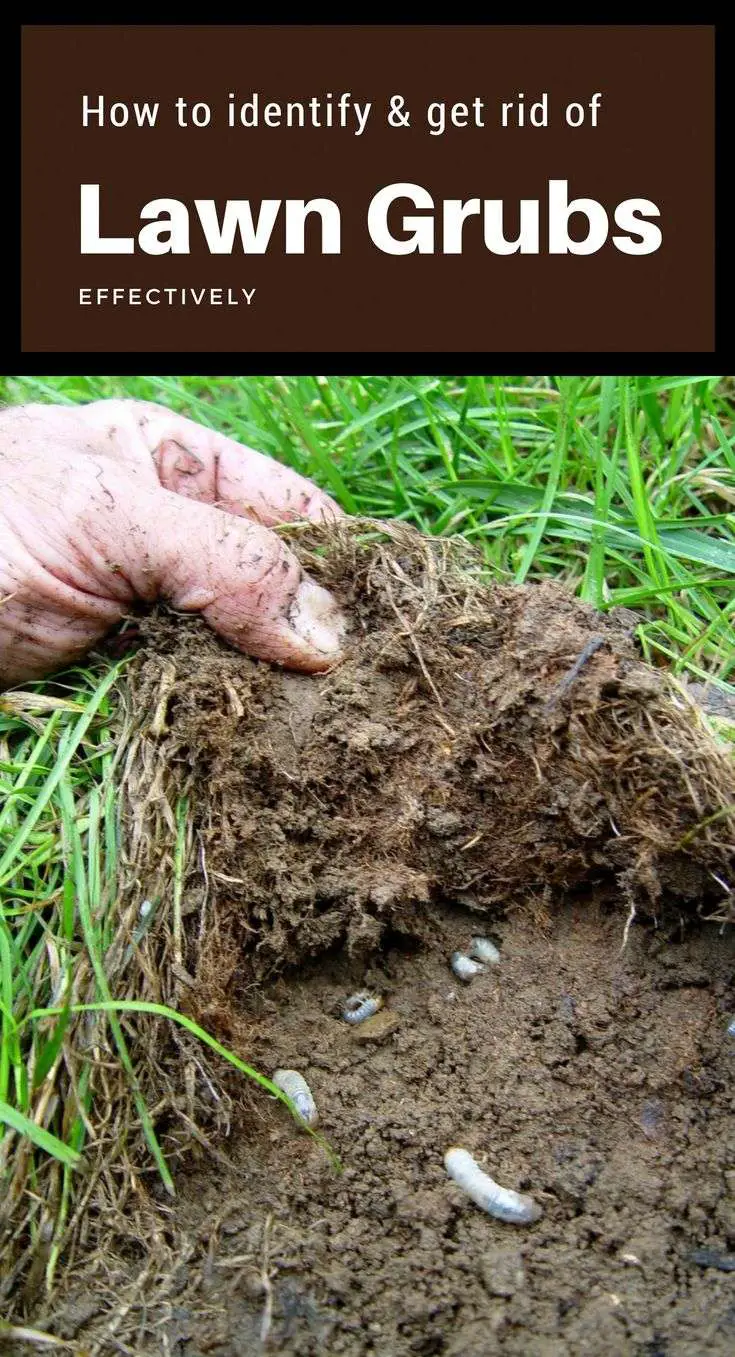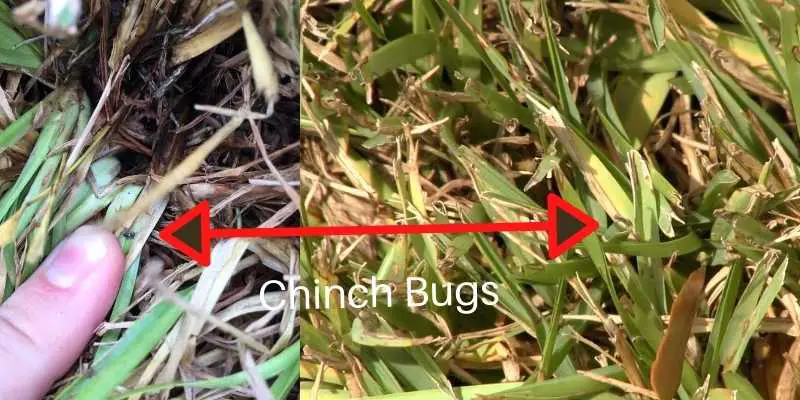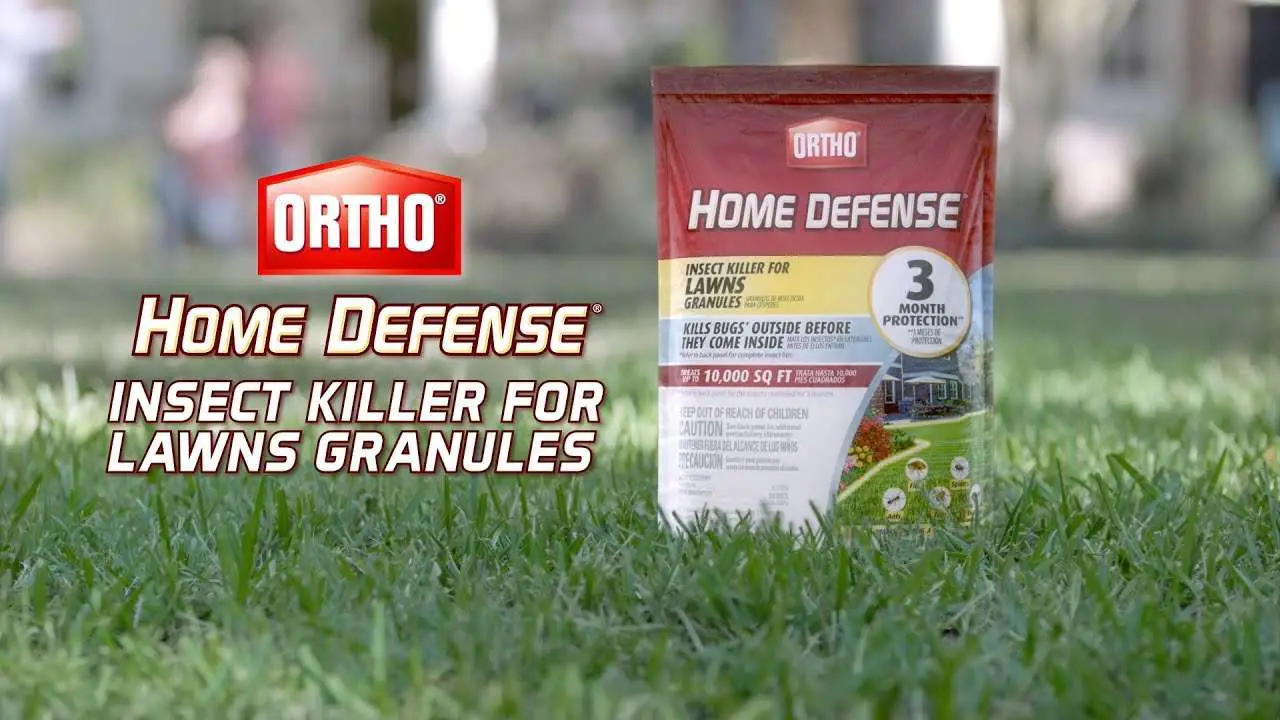How To Check For Grubs In Lawn
Before you start treating, it is important to check to make sure that indeed there are grubs damaging your lawn. Irregular brown patches of dying grass are the first sign. If you see the patches, lift the turf to check for the grub worms.
Take a shovel and dig a square foot about 3 inches deep and lift the turf to check for grub worms. If you find one or two grubs is normal and healthy, but if you find 5 or more grubs, you have a grub worm infestation that needs treatment to prevent further damage to your turfgrass.
How To Prevent June Bugs
The easy answer is that preventing June bugs is largely a matter of controlling the larvae: the white grubs that dwell under the surface of lawns and gardens. Aside from the control measures described above, reducing your use of fertilizers and spray chemicals can help increase the number of natural predators that will kill grubs. Regular lawn dethatching may also help reduce lawn grub populations.
A landscape that is friendly to birds will also help, as larger birds will eat adult June beetles, and some species may dig up and eat the grubs. Large bats are nocturnal feeders that often consume June bugs. Finally, the presence of small predatory creatures such as toads and snakes can help control June bugs.
- Do June bugs bite?
- Are June bugs attracted to light?
Like many night insects, June bugs are attracted to porch and yard lights. To reduce the number of insects, keep these light sources off during outdoor nighttime recreation.
- Do June bugs eat roses?
The common June bug, Phyllophaga longispina, does not feed on roses. However, the Japanese beetle, Popillia japonica, can seriously disfigure roses as well as many other ornamental and edible plants. Japanese beetles also produce grubs in their juvenile phase, which can be controlled in much the same way as common white grubs.
Japanese grubs, unlike June bugs, are highly active during the day. A common method of control is to pick them by hand and drown them in a container of water.
Grow Plants That Will Thrive In Your Yard
You May Like: How To Fix Bald Patches In Lawn
Can Chinch Bugs Be Transferred By Lawn Mowers
Chinch bugs cannot be transferred by lawn mowers since they tend to avoid the upper sections of the grass blades and stay at the base of your turf. I youre spotting chinch bugs on your St. Augustine lawn and are wondering how they got there, the answer could be by flying or crawling in from nearby lawns.
Also, if youve recently transplanted sod or stolon cuttings as sprigs to plant in your St. Augustine turf, it could be that the chinch bugs were carried along with the sod pieces, plugs, or sprigs.
Cultural Chinch Bug Control

Cultural control entails adhering to the proper lawn maintenance requirements for St. Augustine grass. Remember, most turfgrasses are more capable of resisting pest infestation if theyre healthy and properly maintained.
One cultural control method that we recommend is dethatching, as thick layers of thatch on St. Augustine turfs prevent insecticidal control measures from being as effective as they should be.
Dethatching is commonly done using a rake, but you can also prevent thatch buildup on your St. Augustine lawn by adopting the proper mowing practices, which include mowing at the appropriate time intervals and using mulching mowers. Mulching mowers reduce the need for application of fertilizer or compost, thus minimizing thatch.
Other effective methods for dethatching a lawn where the thatch layer exceeds one-inch in thickness include vertical mowing, lawn aeration, top dressing, and avoiding overwatering. Excessive water in the soil encourages St. Augustine roots to grow shallow, making them more susceptible to chinch bugs. Finally, you can also prevent excessive thatching from attracting chinch bugs into your St. Augustine lawn by avoiding application of excessive fertilizer.
Recommended Reading: How Much Is Lawn Maintenance Service
Slaughter By Soap Spray
Sprays composed of soap and detergent diluted in water are effective against insects on the lawn. Instead of combining household soaps with water and spraying it on the grass, seek out insecticidal soaps, which are specially formulated to kill insects and protect plants. While grass is tough, you should dilute the insecticidal soap even further than the package recommends, starting with light formulations of about 1 percent — 2 1/2 tablespoons in 1 gallon of water — and testing effectiveness and lawn health before moving on.
How To Kill Grubs In Your Lawn
During the late summer and early fall, you may begin to notice lawns turning an unattractive shade of brown in certain unsightly, dying patches. The likely explanation is the grass is being destroyed by hungry, thriving grub worms living below the surface of the lawn. If this has happened in your lawn, there is good news. These pests can be controlled, and your lawn can be restored back to its healthy state by getting rid of grub worms.
Better yet, because of a growing preference for natural gardening solutions, there are now some easy and natural ways to kill lawn grubs and stop them from reappearing next year. This means youll be able to get back to enjoying your yard year-round without concern of nasty grubs eating away at it.
Read Also: How To Restore Lawn From Weeds
Simple Way To Find Out If You Have An Insect Problem
If youre seeing lawn damage and think you might have an insect infestation, but dont know what kind of insect it is, try this general test.
Its called a soap-flush.
The process involves mixing four or five tablespoons of dish soap into two gallons of water. Pour this mixture onto an area of your lawn that is between four and six square feet.
If you have insects, they will come out within the next five minutes.
Its normal to see some insects emerge.
But when you see huge numbers of insects emerge, you can assume you have a significant insect problem that needs to be addressed.
You can then complete lawn insect identification and figure out what type of bugs youre dealing with in your lawn.
Note, that if you use this method you should rinse the area well with a hose afterward. Too much dish soap can kill grass by interfering with its ability to absorb water.
So youll want to flush the area to avoid a big dead patch of lawn.
Kills 100+ Listed Insects
Killing bugs and lawn-damaging grubs just got easier with Roundup for Lawns Bug Destroyer. One application will protect your lawn above and below the soil surface from more than 100+ listed insects for up to 3 months. And, you can prevent turf damage by killing grubs before they damage your lawn.
Read Also: How To Remove Pine Needles From Lawn
Spray Leafy Plants With Neem Oil
How To Control Lawn Grubs
A few grubs aren’t a problem, but if you see lots of them when you turn the soil, take action.
If youve had problems in early summer with beetles, and by late summer dead patches of grass have appeared in your lawn, you probably have grubs. Grubs are the larvae of Japanese beetles, June beetles, chafers, and others. These white, C-shaped grubs feast on organic matter in the soil, including grass roots.
You May Like: Which Is The Best Sprinkler System For Lawns
Avoid Using Fertilizers Excessively
Apply the right amount of fertilizer. Excessive fertilizer use also promotes the growth of thatch and makes grass more appealing to chinch bugs as a food source.
So use a slow-release formula during the summers, or use small amounts of fertilizer when needed.
You can improve soil conditions by top-dressing with organic matter such as compost or well-aged animal manure.
Create A Barrier To Keep Bugs Out

Use Ortho® Home Defense Max® Indoor Insect Barrier with Extended Reach Comfort Wand® to create a bug barrier inside your home around windows, doors, and along baseboards. Indoors, on non-porous surfaces it will kill and prevent ants, roaches and spiders for up to 12 months. Then, stop bugs outside before they can come in. Use Ortho® Home Defense® Insect Killer for Lawns & Landscapes to kill and prevent listed insects in your landscape beds and around the perimeter of your home. To kill bugs hiding in your lawn use Ortho® BugClear Lawn Insect Killer. Always follow the label directions.
Read Also: What Will Make My Lawn Greener
How To Kill Ticks In Your Yard
You know what to look for: an insect about the size of an apple seed latched onto the skin or a rash shaped like a bullseye. As a homeowner, youll want to take care of a tick problem before these pests actually latch on to you, your children, or your pets. Luckily, tick infestations are uncommon in a well-maintained yard, but they do happen, so here are some steps to help you kill ticks in your yard.
In some cases, killing ticks will likely involve calling a pest control company, such as Orkin. To get a quote for the companys indoor and outdoor tick control services, call or fill out this simple form to get started.
Should I Be Concerned
Chinch bugs feed by sucking the sap from the crown and stems of turf grasses. They prefer bentgrasses, but will attack many other lawn grasses like bluegrass and varieties of red fescue.
The damage caused by chinch bugs appears quickly in hot weather. With most of the damage in open, sunny areas, this may be mistaken for drought damage.
Lawn damage shows up as irregular yellow patches, which begin in June and spread over the summer. The grass may turn brown and die if feeding continues unchecked, and a severe infestation of chinch bugs can destroy an entire lawn.
Alternate Formats
Recommended Reading: Does Walmart Have Riding Lawn Mowers
If It Bites You It Bugs Us
Many insects can destroy your lawn, find crevices to sneak inside your home, or even pose health risks to your loved ones. Dont let your property become a living space for unwanted critters. From lawn pest control to outdoor mosquito and tick control to prevent bugs like ants and centipedes from invading your home, Lawn Doctor and our lawn care professionals have your back.
Our most popular insect and pest control services include:
Mosquito and Tick Control
Mosquitoes and ticks arent just annoying they could also make you sick. From West Nile to Lyme disease, mosquitoes and ticks have the potential to carry a variety of serious diseases. Its time to protect your family and pets from these possible dangers with Mosquito and Tick control from Lawn Doctor.
The Yard Armour Mosquito and Tick Control Services, which includes several effective pest control options, target mosquitoes and ticks where they live, breed, and set up their attack sites. We spray the bottom side of leaves where mosquitoes sleep. As they settle on to the treated leaves, the product gets absorbed through their feet. Tall grassy weeds are sprayed to target ticks, as this is the prime area for them to perch while waiting to grab on to a new host. These are a few of the Mosquito and Tick Control tactics Lawn Doctor uses to make your yard a safer environment for your family and pets.
Learn more about Yard Armour Mosquito and Tick Control services here.
Perimeter Pest Control
What Do They Do To Grass
Chinch bugs will eat up your grass so that it looks like patches of yellow grass. You may see bare spots, yellowing, or browning foliage. Especially if the grass is weedy and tall and offers them plenty of hiding places to munch without being disturbed.
They like to hide where they wont be seen so theyre safe from predators.
If youve ever seen your lawn in a drought, damage to it forms these pests look very similar.
Drought damage can be differentiated from chinch bugs as drought damage leaves an evenly damaged, brownish grassed area. Chinch bugs will leave mottled gross in patches or clumps unevenly with lines of undamaged grass between each patch.
Youll often notice this around lawn edges, foundations, driveways, streets, bricks, housing, and other buildings. Take a good look at the grass for the presence of these pests and also look for their nymphs. Theyre easy to spot because theyre bright pink/red with a stripe thats white.
You can also use a tool to dig around in the area where you suspect them to be and see if any of the bugs grab onto the tool. You can also wear some garden gloves and look at the grassroots for any chinch bugs present.
Also Check: Do My Own Lawn Weed Control
How To Get Rid Of Grubs In Lawn: 6 Effective Ways + Natural Control
If there are grubs in your lawn, youll start to notice a change in the shade of your turfgrass. Browning of grass during summer and early fall is a likely sign of white grub worms causing the damage. The key to getting rid of lawn grubs is first identifying their signs, and then applying the best control method as I am going to show you here.
The white grub worms in your lawn are a larval stage of scarab beetles. As soon as winter ends, these worms become active when warmth kicks in. They start to damage your lawn by eating grass roots at a high rate.
If you fail to identify and kill lawn grubs on time, theyll develop into pupae, and later into full-grown beetles. The beetles will later start eating lawn grass and other foliage in your yard, causing even further plant damage.
But how do you know youre dealing with grubs in your lawn and not a disease or other problems?
Keep Thatch Layer To A Minimum
Managing this pest begins with good lawn maintenance. In order to limit chinch bug populations, it is important to keep thatch to a minimum. This will also make other control methods more effective.
Thatch is the layer of dead grass between the green tops of the grass and the soil below. It offers chinch bugs a safe haven and chemically binds with many pesticides, decreasing the effectiveness of such measures.
Don’t Miss: How To Kill Weeds In Your Lawn Naturally
Monitor Your Yard And Identify Which Pests You Have
Apply Nematodes To Control Grubs Naturally

You can apply nematodes to get rid of grubs in the lawn naturally and within a few days. Beneficial nematodes are very tiny roundworms that move in the moist soil under your turf and enter into the grubs where they release pathogens that attack the pests and kill them.
Heres how to use beneficial nematodes to eliminate grubs naturally:
- Choose beneficial nematodes that work against grub worms.
- Mix the nematodes with distilled water in a lawn or garden sprayer.
- Water your lawn adequately to keep it moist.
- Spray the nematodes on a grub-infested lawn in the evening.
Pro tip: Apply nematodes only in the evening because they get killed by light and heat. Also, make sure the soil temperature is above 60°F before applying this natural treatment. Water the lawn 15-20 minutes after applying the nematodes for the best results.
Repeat the application after two weeks for the best results in controlling grubs in your lawn.
The beneficial nematodes, also called entomopathogenic nematodes, are very effective and mobile in moist environments. They seek and follow their hosts and infect them. Soon after, the white grub population in the lawn will be destroyed.
Recommended Reading: Does Costco Have Riding Lawn Mowers
